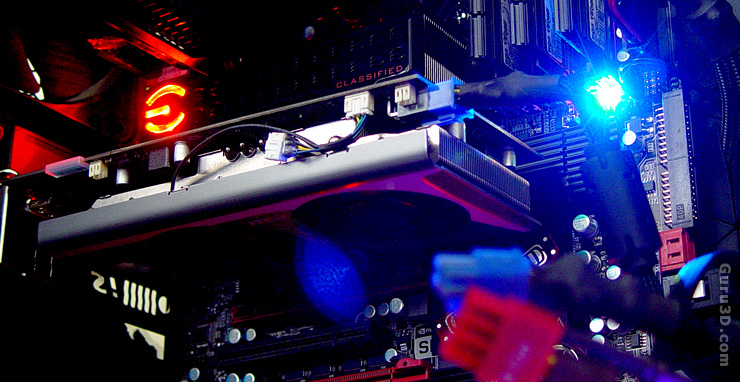Radeon HD Series 5700 Technology
Radeon HD Series 5700 features
Today's tested product will position itself smack down in-between the Radeon HD 4850 and the Radeon 4870 in terms of performance. The Radeon HD 4870 which we all know and love for its performance has 956 million transistors embedded onto that die. The new Radeon HD 5700 GPUs have 1040 million transistors. Correct, that is 1+ billion transistors tucked away in a small chip. The fabrication node, just like the 5800 series, is 40nm for this product.
- The reference Radeon HD 5770 will be clocked at 850 MHz. Its memory is clocked at 1200 MHz (4800 MHz effective).
- The MSI 5770 HAWK is clocked slightly higher at 875 MHz and the memory is clocked at 1200 MHz (4800 MHz effective).
Shader processors then; similar to the Radeon HD 4850/4870/4890 the Radeon HD 5770 will have 800 Shader processors, with the 5750 having 720 Shader processors. Though that looks a little pale in comparison to the 5800 series, remember... these are mid-range products at really affordable prices (!).
The number of ROP units are rocking steady at 16 and sure -- texture units remain at 40 for the 5770 and 36 for the 5750.
But before you get blinded by all the specs in a few lines of text, let's break down the card announced today in comparison to last year's Radeon HD 4870.
| Radeon HD 4870 | Radeon HD 5750 | MSI 5770 HAWK |
Radeon HD 5870 | |
| Process | 55nm | 40nm | 40nm | 40nm |
| Transistors | 956M | 1.04B | 1.04B | 2.15B |
| Die Size | 263 mm² | TBA | TBA | 334 mm² |
| Core Clock | 750 MHz | 700 MHz | 875 MHz | 850 MHz |
| Shader Processors | 800 | 720 | 800 | 1600 |
| Compute Performance | 1.2 TFLOPs | 1.008 TFLOPs | 1.36 TFLOPs | 2.72 TFLOPs |
| Texture Units | 40 | 36 | 40 | 80 |
| Texture Fillrate | 30.0 GTexels/s | 25.2 GTexels/s | 34 GTexels/s | 68.0 GTexels/s |
| ROPs | 16 | 16 | 16 | 32 |
| Pixel Fillrate | 12.0 GPixels/s | 11.2 GPixels/s | 13.6 GPixels/s | 27.2 GPixels/s |
| Z/Stencil | 48.0 GSamples/s | 44.8 GSamples/s | 54.4 GSamples/s | 108.8 GSamples/s |
| Memory Type | GDDR5 | GDDR5 | GDDR5 | GDDR5 |
| Memory Clock | 900 MHz | 1150 MHz | 1200 | 1200 MHz |
| Memory Data Rate | 3.6 Gbps | 4.6 Gbps | 4.8 Gbps | 4.8 Gbps |
| Memory Bandwidth | 115.2 GB/s | 73.6 GB/s | 76.8 GB/s | 153.6GB/s |
| Maximum Board Power (TDP) | 160W | 86W | 120W | 188W |
| Idle Board Power | 90W | 16W | 18 | 27W |
These numbers are really good, for the money this is going to make an excellent mid-range product series. We have not discussed it just yet, but memory; ATI will stick to DDR5 for their mid-range and high-end products. On the 5700 they'll crank it down a notch as we get 128-bit memory, cutting the bandwidth in half from 256-bit. However, since it's gDDR5 memory (quad data rate) it will still offer sufficient bandwidth.
So we established that the culprit of the 5700 series will be a cut off memory bandwidth, and this is the reason why its performance actually will be slightly lower (on average) than say a Radeon HD 4870.
However, you can expect the Radeon HD 5770 to outperform any current single-GPU based graphics card in the mid-range segment like the Radeon HD 4850 and GeForce GTS 250. And all that with a single chip utilizing less roughly 120 Watts.
But let's have a look at the MSI's 5770 HAWK a little closer.

